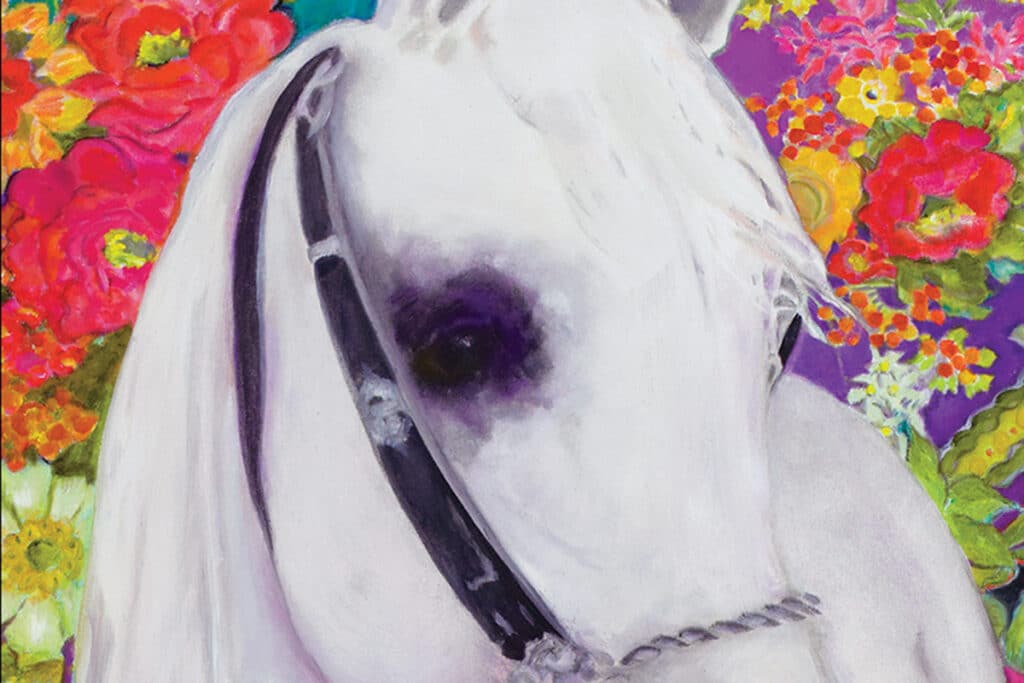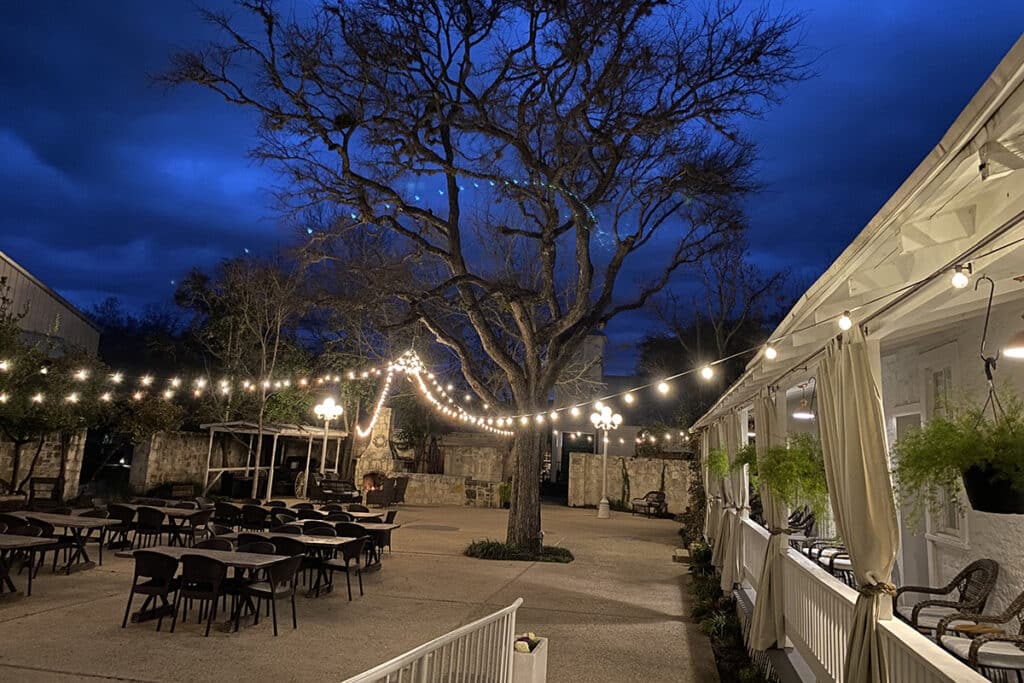Back in 1996, newcomers Kellen Kee McIntyre and her husband, Eric Lane, were exploring around one day when road repairs on Fredericksburg Road forced them to detour through the surrounding neighborhoods. “I became enchanted by the architecture of the Monticello-Woodlawn-Jefferson neighborhoods,” says McIntyre, who is today the executive director of Bihl Haus Arts, a contemporary art gallery and multi-disciplinary center that has brought new life into the Deco District area. “I told my husband ‘If we stay in San Antonio, I want to live here.’” Less than a year later the couple decided to settle in San Antonio for good after McIntyre accepted a full-time teaching position at UTSA. Back then, the building known as the Bihl Haus — at 2803 Fredericksburg Road — was a forlorn, abandoned structure, completely enclosed in metal sheeting. Originally built in 1920 by businessman George David Bihl as a home for his family “way out of town,” the imposing edifice was constructed with stones that the U.S. military used to erect a barricade around the Alamo. But no one knew that in the late ‘90s.
The Lanes (and others) finally got a chance to see what was hiding beneath that metal envelope when workers dismantled the covering, allowing the old residence to re-emerge in all its dilapidated glory. The couple promptly joined an informal group of Monticello Park neighbors to fight for the preservation of the edifice that developers were itching to demolish. Then, in 2003, Dallas developer Brian Potashnik, owner of Southwest Housing, approached the Deco District neighborhood associations with a proposal to build a gated retirement complex on the semi-vacant lot just behind Bihl Haus and invited the activists to decide how best to use the Bihl residence. A professor of art history and an art lover, McIntyre voiced her opinion. “I said, ‘We need an arts center,’” she recalls. “I saw Brian kind of close in on himself for a moment, but then he looked up and said, ‘That’s a good idea.’ I quickly put a committee together, and in a couple of months we had a proposal for him, which the company accepted. In the meantime Eric was doing some research, and he found the daughter of the man who built the house, Aileen Bihl Locklar. She was the one who told us about the stones from the Alamo barricade. That changed everyone’s attitude toward the building. Southwest Housing paid for the restoration. It was altogether a perfect example of private, public and corporate collaboration. This is how all projects in existing communities should be done.” The project won the Conservation Society’s award for restoration and innovative reuse.
Today Bihl Haus Arts is a thriving gallery that mounts seven to eight exhibits a year and hosts 20 or so poetry and music events, plus discussions on socially relevant topics. Altogether, McIntyre estimates that since Bihl Haus opened its doors in 2005, some 500 artists have taken part in its often multidisciplinary programs — visual artists, poets and writers, musicians and theater artists. About 60 percent have been women, who still don’t have the same opportunities as men to show their work, notes McIntyre. “It’s important to me to give opportunities to women,” she says. Under her leadership, Bihl Haus has also forged a close relationship with the residents of the retirement community, the Primrose at Monticello Park Senior Apartments, with whom it shares the gated property. Residents serve as gallery docents and help in many other ways, and they also take art classes for free and exhibit their work through the Go!Arts program, now supported by the WellMed Charitable Foundation. The successful program, which will be expanded to other retirement settings, fits perfectly with Bihl Haus’ mission to “create community through the arts,” whose other component is the participation of professional artists who live in the area. About 70 of them took part in another Bihl Haus initiative, the On and Off Fredericksburg Studio Tour in February, a three-day event that also engaged other nearby organizations and businesses. Among the participating artists were well-known names such as Danville Chadbourne, David Zamora Casas, Angel Rodriguez-Diaz, Carol Cisneros, Kathleen Trenchard, Dale Jenssen, Laurel Gibson and David Rubin, who ls the curator of contemporary art at the San Antonio Museum of Art. Art by each participant will be on exhibit at Bihl Haus through March 24.
Art has always been part of her life
Growing up in the shadow of the El Paso Museum of Art with a mother who plastered the walls of their house with reproductions of famous paintings, young Kellen was immersed in art all through childhood and adolescence. She taught school in El Paso for a while and worked as an assistant to an art history professor at UT El Paso. The latter experience ultimately decided her choice to pursue art history through both a master’s degree and a Ph.D. While working on her doctoral thesis in Albuquerque, N.M., she met and married Lane, whom she credits for being instrumental in guiding the negotiations to save the Bihl Haus. As an art historian, McIntyre focused primarily on Latin American art, with a secondary focus on the art of women and minorities. She taught both at UTSA (eight years) and briefly at the University of the Incarnate Word but considers herself fortunate to be doing what she is doing now. “I love working with so many hard-working artists,” she says. “San Antonio is a great place for making art but a terrible place to make a living from art.”
Bihl Haus helps whenever possible. Artists are never asked to donate work for any purpose, and the gallery tries to shoulder both the costs of installation and offer a stipend to the artist, at least for larger, one-person installations. The director’s goal is to “pay every artist for their show.” While that may not yet be possible, the exposure artists get at Bihl Haus — and potential sales — are a great help.
As to what guides her in selecting what to show, she says, “I like the big production, when the whole gallery is one coherent concept show, like what we just did with Jane Madrigal. The other thing I like is artwork that has meaning, social commentary, something that’s deeply meaningful to the artist. Of course, the art has to be good. Too much contemporary art has no meaning.”
For information about upcoming shows and events at Bihl Haus Arts, go to www.bihlhausarts.org




